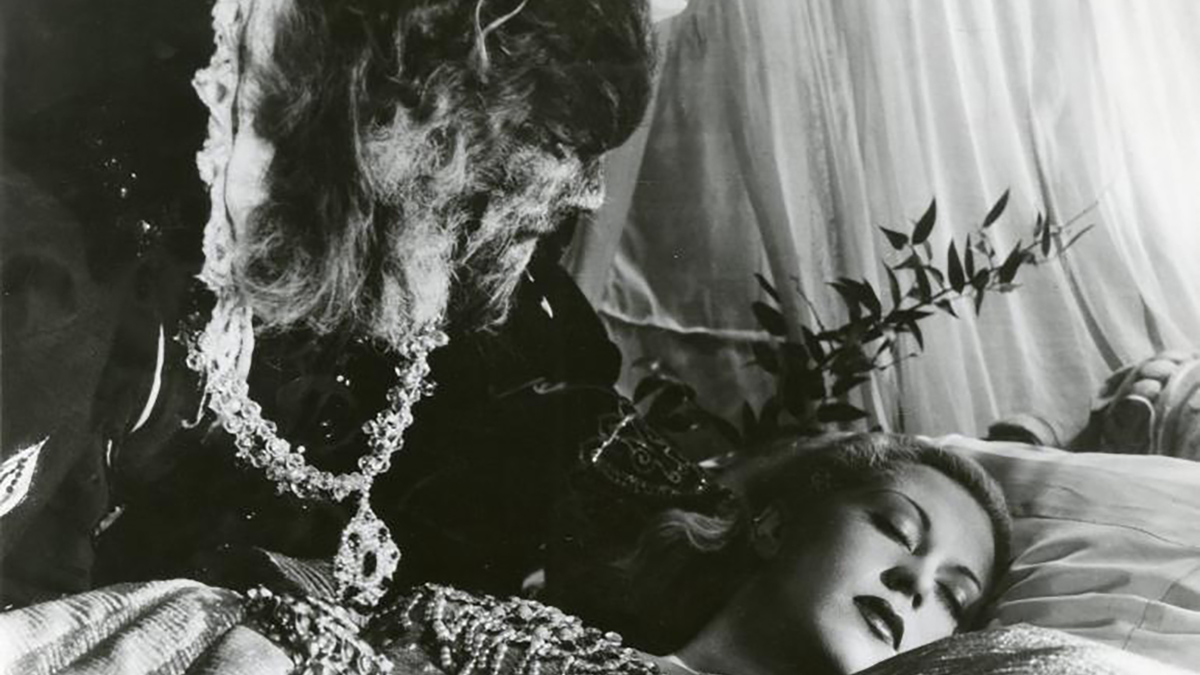
© 1946 SNC (GROUPE M6)/Comité Cocteau
"Beauty and the Beast and the Beast" My Beast, the fate changed by a single rose
2023.01.07
"Beauty and the Beast" synopsis
Belle, a beautiful and good-natured girl, is used like a servant by her noisy older sisters, but she doesn't complain and does the housework every day. One day, while on a journey, his merchant father wanders into an uninhabited old castle. When he breaks a beautiful rose in the garden, a beast appears and threatens to take the merchant's life, but he orders him to give up one of his daughters in exchange for his life. Belle heads towards the castle without hesitation and is initially surprised by the beast's appearance, but gradually opens her heart to its kindness...
Index
- Give me back my beast!
- spell and desire
- In a world without footsteps
- Shooting diary
- don't look at me like that
- scent of roses
Give me back my beast!
"Give me back my beast!" (Greta Garbo)
"Where is my beautiful beast?" (Marlene Dietrich)
After watching Jean Cocteau's ``Beauty and the Beast'' (1946), Greta Garbo reportedly shouted at the screen, ``Give me back my Beast!'' Marlene Dietrich, who rushed to the film's premiere, grabbed Jean Cocteau's hand as she sat next to him and asked, ``Where's my beast?'' Both are reactions to the scene where the beast's curse is lifted and he transforms into a beautiful prince. These almost passionate reactions perfectly capture the essence of this film.
The heroine, Belle (Josette Day), is clearly confused when she sees the prince in his true form. Belle makes no secret of her love for the Beast. The beast's ``you'' was more beautiful than the prince's ``you.'' Jean Cocteau's aim was to make the beast more attractive than any other man. The reactions of Greta Garbo and Marlene Dietrich, who lamented the disappearance of the Beast, would have been a great compliment to Jean Cocteau.
Jean Cocteau Film Festival Preview
Although Jean Cocteau had been involved in film by writing screenplays for films such as `` A Love '' (1943), Jean Cocteau had only 14 years of experience as a film writer from `` Blood of the Poet '' (1932) until the release of ``Beauty and the Beast.'' There is a blank year. In the filming diary for this film, he frankly talks about his anxiety about returning to work as a director. The beautiful novella `` Blood of a Poet, '' which has a strong experimental film flavor, and ``Beauty and the Beast,'' which is very different, can be said to be films made for Jean Marais, who was his girlfriend at the time. Jean Marais talks about his memories of the original work of ``Beauty and the Beast'' as follows:
"Ever since I was a child, I had been fascinated by ``Beauty and the Beast and the Beast,'' which I had seen alongside Perrault in the red-and-gold-covered ``Rose Bunko.'' The supernatural in this story seemed natural to me. But I think so.”*1
Jean Cocteau expands on the image of ``Beauty and the Beast'' by referring to illustrations and prints by Gustave Dore and paintings by Vermeer. Following the memory of Jean Marais, I photograph Fairy Tail as a ``poetic landscape'' that was born right next to reality. Jean Marais played the three roles of the Beast, Avenin, and the Prince in this film. The beast's make-up, which took five hours every day, gives him the richest facial expression of any of the men in this work.

